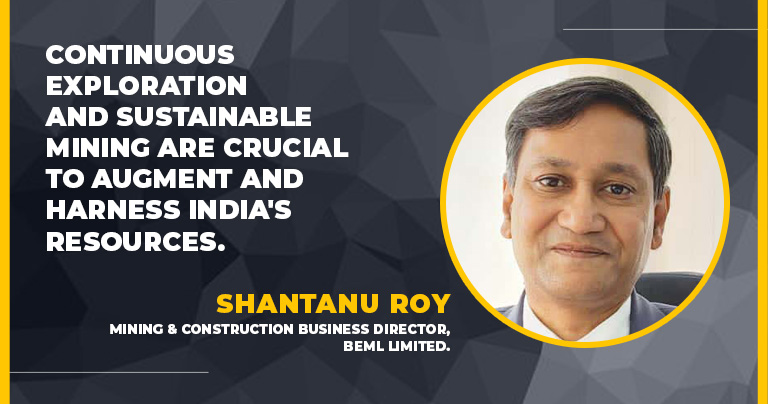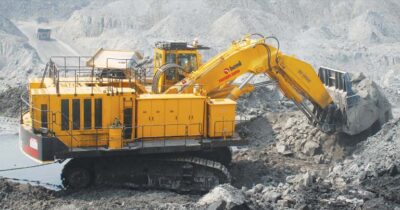Electric equipment in Indian mines can ensure emission standard compliance
By Edit Team | April 7, 2023 10:57 am SHARE

An investor-friendly regulatory regime is needed to provide security of tenure and encourage investment in exploration and critical infrastructure for the industry’s growth, opines Shantanu Roy, Director – Mining and Construction Business, BEML Limited.
How do IoT, GPS sensing and 3D imaging in equipment improve underground mining efficiency?
IoT and GPS sensing have transformed the mobility-driven vehicle industry, creating a smarter perception of machines and equipment used in underground mining, such as load haul dumpers (LHD) and side discharge loaders (SDL). However, there are challenges to implementing these technologies in underground mining equipment and mines, including the difficulty of satellite signals penetrating the ground to reach mining locations. Nonetheless, the continuous advancement of IoT and GPS sensing will enable the incorporation of Advanced Driver Assist Systems (ADAS) and teleoperation, paving the way for mine mechanisation and automation. Overcoming these challenges is essential for underground mining equipment to fully leverage IoT and GPS sensing technology and achieve growth in mechanisation.
Which emerging trends influence India’s mining dynamics, including underground mining?
As mineral demand increases in the coming years, the mining industry must adapt to several trends determining its success. The transition to a low-carbon economy requires mining companies to integrate renewable energy, electric or hydrogen-powered trucks, and recycling into their operations to sell low-carbon premium minerals. Accessing resources in frontier areas is necessary as world-class mineral resources in low-risk areas are depleted. Mining companies must either master new technologies for extraction and processing or venture into frontier areas where extraction was previously not economically viable. Finally, higher production targets from coal mines demand the deployment of the latest technology and higher-capacity mining equipment.

How do you assess the mining activity in India compared to the potential?
India has abundant mineral resources and produces 87 minerals, including 4 fuels, 10 metallic, 47 non-metallic, 3 atomic, and 23 minor minerals. The mineral development and mining sector play a vital role in India’s GDP growth and are closely linked to the manufacturing sector, catalysing the growth of basic industries such as power, steel, and cement. Exploration should be prioritised to augment the country’s resource base continuously, and existing resources should be harnessed through sustainable and scientific mining, including beneficiation technologies and zero-waste mining. An investor-friendly regulatory regime is required to provide security of tenure and encourage investment in exploration and critical infrastructure for the
industry’s development.
How can India improve export potentials for mining solutions to the rest of the world?
The global demand for mining solutions is rising, particularly in developing countries, presenting an opportunity for India to become a major player in the market. India can enhance its export potential for mining solutions by innovating, partnering with other countries, prioritising quality, and promoting its products through marketing and branding. Additionally, India should support its exporters through financial incentives and regulatory streamlining. Sustainability and environmental concerns must also be considered to minimise the environmental impact of mining.
For more details visit: https://www.bemlindia.in/
Cookie Consent
We use cookies to personalize your experience. By continuing to visit this website you agree to our Terms & Conditions, Privacy Policy and Cookie Policy.





















